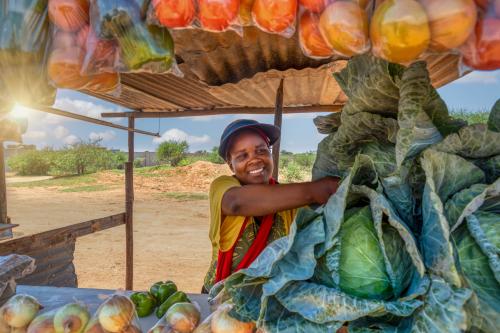On April 14th, 2023, India is set to overtake China as the world’s most populous country. This historic event marks a turning point in global demography, with India reassuming a position it last held in the 1700s as part of the Mughal Empire.
The global consumer class—India or China?
At the turn of the century, the global consumer class (those spending more than $12 a day in 2017 PPP) was a western concept, and global brands were western brands, as the rest of the world was too poor to afford them. Today, more than half of the world’s consumers live in Asia, led by the momentum in India and China. These two countries now make up a third of the world’s population, a third of the global consumer class, and approximately a quarter of global consumer spending (in PPPs).
In aggregate, India and China appear very similar. Both countries have a population of 1.4 billion, this year they will each add around 30 million people to their consumer class, and in the past decade, both economies experienced high growth, around 5-7 percent annually. From a bird’s-eye view, India looks like China, or more precisely, a China-to-be.
While China and India will both be dominant markets in the world economy, their consumer classes have three fundamental differences:
- Size: At 899 million people, China remains the country with the most populous consumer class, whereas India’s is only half that at 473 million. Their growth in 2023 is comparable, with China’s consumer class growing by 36 million and India’s by 31 million. However, estimates that China will continue to have a larger consumer class for at least the next two decades. China will become the first country to reach 1 billion people in the consumer class around 2026/27.
Figure 1. India and China: Same population, different consumer class (2023)
Source: World Data Pro, 2023
- Demography: China’s consumer class is older, with a median age of 39 while the average consumer in India is only 30 years old. India’s consumer class growth will be among young people, while China will predominantly add consumers above the age of 45 (see figure 2). By 2030, India will be home to 357 million young consumers below 30 years, the largest “young consumer market” in the world. By contrast, China is already the largest senior market in the world in terms of people (by spending, the U.S. remains number one). Almost half of the country’s consumer class growth until 2030 will come from individuals aged 60 or older. By 2030, India will be home to one-fifth of the world’s youth consumer market, while China will represent one-fourth of the senior market.
Figure 2. India’s growth is young, China’s is old (Consumer Class Population Growth 2022-30)
Source: World Data Pro, 2023
- Geography: China’s consumer class is urban. Four out of every five consumers live in cities. India’s consumer class is much more dispersed: Only around half of its consumer class lives in urban areas. China’s consumer class is concentrated in large cities, with an estimated 553 million people living in cities with a population of over one million by 2030. In comparison, India is projected to have 290 million people living in large cities by the same year. These numbers suggest that, despite their growth in numbers, India’s new consumers will be harder to reach than China’s.
Figure 3. China’s consumer class is urban, India’s is urban and rural (2023)
Source: World Data Pro, 2023
Given the different profiles of India and China’s respective consumer classes, it is not a question of whether one will displace the other, but rather of the joint importance their markets will exert over the next decade.
Given the different profiles of India and China’s respective consumer classes, it is not a question of whether one will displace the other, but rather of the joint importance their markets will exert over the next decade. Together, by 2030, India and China are expected to add over half a billion new consumers (representing 55 percent of the global total) and around $9 trillion ($2017 PPP) in annual spending (42 percent of the global total). India’s consumer class boasts a young, geographically dispersed population with significant potential for growth in consumer spending. In contrast, China’s consumer class is older, more affluent, and concentrated in cities.
For questions regarding the underlying data model, please contact Juan Caballero-Reina ([email protected])
The Brookings Institution is committed to quality, independence, and impact.
We are supported by a diverse array of funders. In line with our values and policies, each Brookings publication represents the sole views of its author(s).












Commentary
China and India: The future of the global consumer market
April 14, 2023